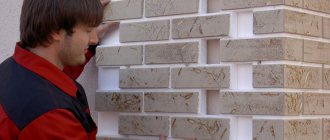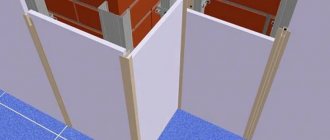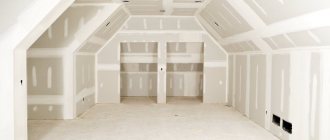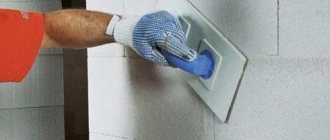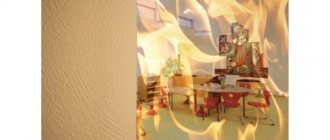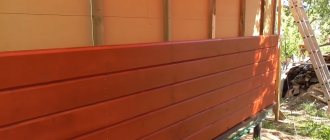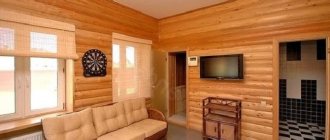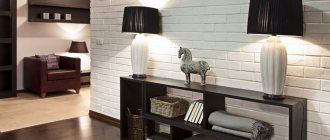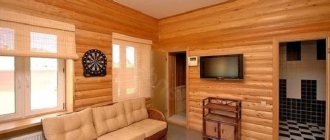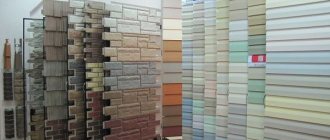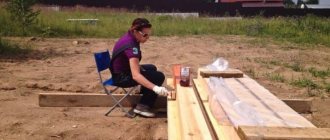27646 0 6
Rednasty November 2, 2016I'm not a wizard, I'm just learning. But I know everything about interior styles, comfortable home improvement and the transformation of Khrushchev’s apartments into luxury apartments. Hobbies: I like to give good advice.
The dacha is a truly cozy place where you want to return again and again!
In our realities, large investments in dacha repairs look quite unproductive. On the one hand, is it worth spending a lot on furnishing a home in which we spend at most several months? On the other hand, no one can cancel the completely reasonable desire for a cozy place in their “country estate”.
Decorating a country house can look simple and neat
If you are interested in simple materials and budget solutions that can improve and decorate your dacha, then this article is definitely for you. In it, I will analyze the main inexpensive methods of wall cladding and share several creative options for creating an original country interior.
Lining
Another natural and budget material for finishing a country house interior.
It will fit perfectly into country style and will withstand temperature changes and humidity. The lining becomes wear-resistant and rot-resistant after applying special compounds. It can be installed on slightly convex or curved walls. The material can be painted, treated with stain, wax or oil, giving the desired natural shade. A more budget-friendly option is varnish, but over time it turns yellow. The layout of the elements can be any: diamond, herringbone, half wall. With the help of lining they decorate the ceiling or highlight certain zones.
Requirements for façade cladding materials
House cladding performs two functions:
- Decorative. It makes the facade beautiful and aesthetic, sets and emphasizes the style of the building, and makes it stand out from the surrounding buildings.
- Protective. Protects the walls and interior of the house from atmospheric influences.
In order for the finished cladding to perform both functions, all facade materials must have:
- Low thermal conductivity - allows you to retain heat inside the house.
- Increased or absolute fire resistance - for protection against fires and the spread of fire in the event of a fire.
- Sufficient vapor permeability - for a favorable microclimate inside the house and protection of the insulation from condensation.
- High moisture resistance - to prevent the absorption of moisture, which leads to destruction of the material.
- Resistant to chemicals, fungus, microorganisms, rodents and insects.
- Resistant to sunlight, so as not to fade in the sun and maintain its decorative qualities throughout its entire service life.
Important : the cladding must provide not only an insulation effect, but also sufficient sound insulation to protect the interior from extraneous sounds.
Board
Suitable for both wall decoration and floor covering. The main difficulty is to choose the right material: the boards should not be wet and, conversely, overdried. They look impressive after treatment with protective compounds, give a country house a special charm and fill the atmosphere with coziness.
For dacha floors, there are special boards that are laid using the tongue-and-groove technology. This is the most reliable connection that allows you to create a strong and even floor.
Brushed and barn boards are still in fashion, but despite its aged appearance, the finished material is quite expensive. To avoid costs, the elements can be processed yourself.
Flooring for a summer residence
The most common type of flooring used in a dacha is plank flooring (wood flooring). And this is not surprising. Wood flooring always attracts owners with its aesthetics and durability. In addition, wood is an environmentally friendly material, and therefore the floor will be as safe as possible for human health.
Before you begin installing the wooden flooring, you need to make a rigid screed. It uses mixtures created on the basis of porous materials. A striking example is expanded clay. A floorboard, preferably tongue-and-groove, is laid on this base. You can easily make this type of flooring yourself.
Next, the plank floor can be painted or covered with linoleum. For painting, you can use oil, alkyd, acrylic, polyurethane or perchlorovinyl paints, as well as acrylic and oil impregnations and varnishes. They will not only improve the appearance of the floor, but also protect it from external factors.
By the way, board flooring has found wide application not only inside a country house, but also on the site itself. In this case, the flooring is laid directly on the ground.
But before you start decorating the interior of your country house, you need to think about its high-quality insulation. Our article will help answer many questions related to insulation, which provides information on how to choose the right insulation for walls inside a country house.
Logs or block house
If the walls of a country house are built from logs, try not to hide the authentic beauty of the wooden walls. Logs are a surprisingly durable and reliable material, and after repair they will last for decades.
House panels are used to decoratively imitate log walls. From the outside, they have a semi-cylindrical shape and are fastened with a tongue-and-groove locking connection. A block house made of wood is used for the interior, and vinyl is used for the façade cladding.
What to choose from?
Laminated material coated with synthetic resins is popular. This enhances their moisture resistance and increases strength.
Laminated fiberboards are:
- Tile - with a large selection of sizes from 30 by 30 to 100 by 100 cm. They are secured with tenons and grooves, staples. The plates allow you to create beautiful patterns and ornaments. Every year the construction industry produces new beautiful, interesting shades and textured patterns.
- With imitation lining. This is a new type of material. The method of fastening is similar to ordinary lining. The sheets are sold in standard sizes and are often used for covering walls and floors. The material has good moisture resistance.
- Sheet - a universal type, with many textures, colors, sizes, methods of fastening to the base.
Imitation of lining
Glass wallpaper
If you are looking for a more conventional, but at the same time durable material for finishing walls, fiberglass wallpaper is an ideal option. They are often used to decorate public places because they are resistant to mechanical damage and are not afraid of high humidity, fire and ultraviolet radiation. They also protect the walls from insects and slightly level the surface.
By choosing such glass wallpaper instead of paper or non-woven wallpaper, you are investing in the future: updating the renovation will not be difficult, since the coating can be painted several times.
Exterior wall decoration
Interior decoration of a house is a rather lengthy and complex process. It is much easier to carry out work outside. There are different methods. The most common is finishing brick walls with siding. For this material, a sheathing is first made from wooden slats or metal profiles. We must not forget about the construction of a vapor barrier layer. Mineral wool mats are installed between the profiles. They will serve as thermal protection. All this is covered with another layer of film on top. Next comes the installation of metal or plastic siding.
Decorative plaster
The material cannot be called the cheapest, but if you wish, it is not difficult to find affordable compositions. Plaster imitates a variety of textures (stone, wood, concrete), and is perfect for finishing even wet rooms.
It is resistant to mechanical stress and easily tolerates temperature changes, which is especially important for a country house. Fans of decorative plaster value it for its durability and ability to hide minor irregularities.
Ideal for creating an interior in eco, Provence, country, chalet styles.
Brick cladding
Finishing the facade with brick is a classic that is always relevant if the price is not at the forefront. But the cladding is designed immediately, since the brick screen needs a solid foundation. When everything is according to plan, and not at once, free space is left on the foundation for facing bricks. Both walls run parallel, inside and out, using flexible ties or otherwise tied together. Based on the parameters of the wall material, the “pie” may include insulation (slab, backfill), or the masonry is carried out without thermal insulation. The presence or absence of a ventilation gap between the base and the cladding depends on the vapor permeability of the base. If it matches the materials, for example, when the box is made of rough brick or ceramic block, a ventazor is not needed. If the walls are made of aerated concrete, foam concrete, wood concrete, wood or other materials with high vapor permeability, a ventilation gap is required. Different types of bricks are used for cladding facades.
- Ceramic - mainly for facing, but masonry from backfill “a la Bavarian” is also possible.
- Clinker - ceramics, but with improved characteristics on all fronts, be it service life or presentation. The high price classifies the material as a premium finishing class.
- Silicate is an option for everyone, for dry regions.
- Hyper-pressed - does not allow water to pass through, surpasses even clinker in strength, has a lot of colors and textures, but is not widely used.
A brick facade, subject to the choice of high-quality bricks and masonry mortars, as well as adherence to technology, is a complete advantage.
- Durability.
- Strength.
- Reliability.
- Resistance to any atmospheric factors and mechanical influences.
- Presentability.
However, not everyone can cladding a house on their own, and invited “masters” often manage to make mistakes. Plus, the foundation must be designed for such weighting, because there are two boxes. Wetting of the facade, efflorescence, spalling and other “delights” are not shortcomings of brick facades, but poor quality bricks, increased salt content in masonry mortars, and disturbances during the masonry process.
AntonKananykhinFORUMHOUSE Member
I am sharing my experience of Bavarian masonry using domestically produced clinker bricks, maybe it will be useful to someone.
- It is impossible to choose a material in a store; you need to take brick samples (10 pieces), seam samples and go to the site to see how the masonry will look in natural light.
- To make it easier to match the color, it is advisable to take bricks from one firing batch.
- The geometry is far from ideal, closer to a boat shape, but this is not critical.
- Craftsmen will have to pay extra for laying clinker.
- Pallets usually contain more dark-colored bricks, which are best set aside and used in less visible areas.
Everything was fine; if you are a perfectionist and are willing to overpay considerably, it is better to pay attention to German clinker.
Linoleum and laminate
These floor coverings require high-quality surface preparation. Most appropriate in houses designed for all-season use. For a country house, it is recommended to choose moisture-resistant laminate sheets that will withstand exposure to water and condensation.
If your choice falls on linoleum, it is wiser to purchase a commercial type, which is resistant to abrasion and protected from force. In a country house, flooring in natural shades will look harmonious.
One of the advantages of a country house is that in its setting you can embody the most unusual ideas. This is where you can feel at one with nature and escape from the worries of the city.
An important point - sound insulation
If you decide to provide good sound insulation in your home, be prepared to spend time and money. The most common solution to this problem is plastering the surfaces. To do this, the inside of a brick house is equipped with a reinforcing mesh, onto which a plaster solution will subsequently be applied. Thus, the walls are not only isolated from extraneous noise, but also leveled.
Naturally, to obtain the best results, I recommend using a special material - a sound absorber. In order to decorate a brick house with it, it is necessary to build a wooden frame, the racks of which will be located at a distance of no more than fifty centimeters from each other.
I advise leaving a small gap between the bars and the wall, the width of which should be sufficient for laying soundproofing material, the laying of which should be done with a residual overlap on the floor and ceiling.
The above-mentioned plasterboard finishing is applied on top of the frame, which makes it possible to create an additional barrier that enhances the properties of the soundproofing material.
Cladding a house with facade panels
An inexpensive option for cladding a house is façade panels. This is the same PVC siding, but with a slightly different shape - in the form of a rectangle. They can be mounted both on the sheathing and on the walls, if they are smooth enough. Average sizes of facade panels:
- Width – 320-460 mm.
- Length – 1000-1550 mm.
- Thickness – 0.7-1.2 mm.
Advantages of facade panels:
- light weight for easy installation;
- corrosion resistance;
- resistance to moisture, rot and fungus;
- self-cleaning ability (dirt is easily washed off by rain);
- possibility of installation in horizontal and vertical directions;
- a large selection of colors and textures (the panels naturally imitate wood, stone and brickwork);
- service life – up to 50 years.
We advise you to study : “Calculation of facade panels. Types of stone imitations."
What does the finishing of facade panels look like?
Price for facade panels
The cost of facade panels is determined by their design and manufacturer. Today the most popular brands of this material are:
- Docke (Germany). Price – from 360 rub./piece.
- FineBeer (Russia). Price – from 440 rub./piece.
- Grand Line (Belarus). Price – from 260 rub./piece.
- "Yu-plast" (Russia). Price – from 260 rub./piece.
We advise you to study : “Full review of Grand Line facade panels: characteristics, design, analogues, advantages, installation technology.”
